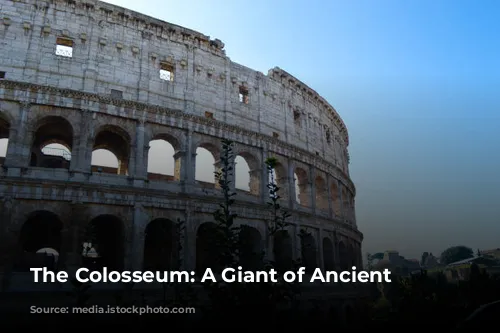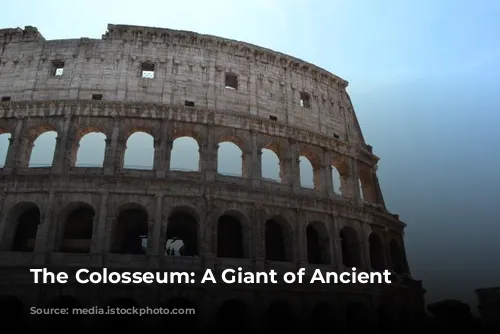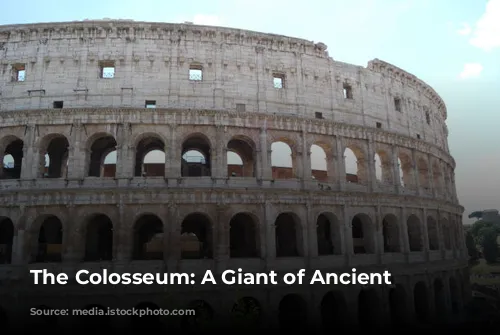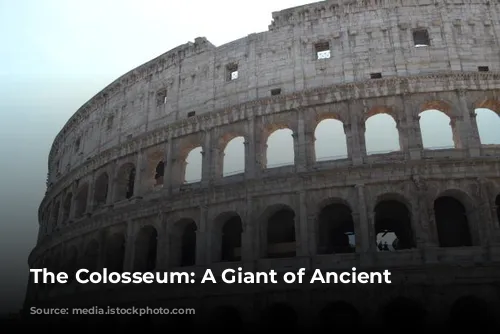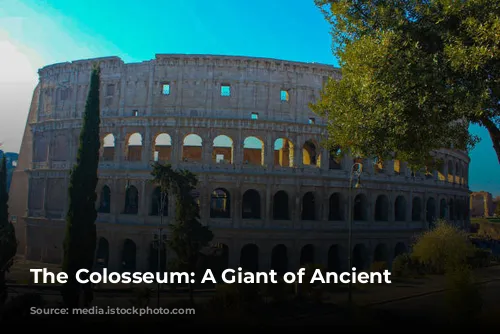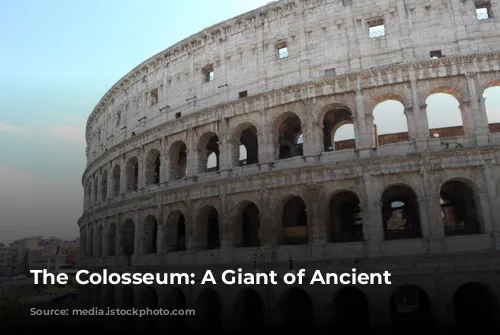The Flavian Amphitheatre, a colossal structure that dominates the Roman landscape, is better known by its more familiar name: the Colosseum. This iconic monument, started by Emperor Vespasian and inaugurated by his son Titus in 80 AD, stands as a testament to the grandeur and spectacle of ancient Rome.
The Colosseum’s opening ceremony was an extravaganza, lasting an astonishing one hundred days. The Roman people witnessed thrilling gladiatorial combat, mesmerizing animal hunts, and awe-inspiring sea battles known as naumachiae. The arena was even flooded, creating a temporary sea for these naval re-enactments. Imagine the scale of these events, with over 5,000 animals sacrificed during the opening celebrations!
Why is it called the Colosseum?
The origins of this name lie in a medieval prophecy by the Venerable Bede, who foretold, “Rome will exist as long as the Colosseum does; when the Colosseum falls so will Rome; when Rome falls so will the world.” Perhaps he was influenced by the massive statue of Emperor Nero, known as “the Colossus”, which stood beside the amphitheater and was sadly destroyed long ago.
A Marvel of Roman Engineering
The Colosseum is an architectural masterpiece, an impressive structure of travertine stone, boasting an elliptical shape to accommodate a vast audience. This imposing building, with its four tiers and 80 arches per floor, was completed in less than a decade, a testament to the incredible skills of Roman builders.
The Romans were masters of the arch, a crucial element in their architecture, enabling them to distribute the weight of massive structures effectively. Think of the Roman aqueducts, another feat of Roman engineering. The Colosseum can be seen as a series of aqueducts stacked upon one another, showcasing the power of this architectural technique.
A Glimpse into the Past
While today we see only a skeleton of the former arena, the Colosseum still leaves us breathless. Over time, the structure has endured neglect and repurposing, with its marble, lead, and iron used for other constructions, including Barberini Palace, Piazza Venezia, and even St. Peter’s. The holes in many columns are a reminder of this plundering.
Despite its loss, the Colosseum’s grandeur persists. Imagine 70,000 spectators filling its tiers, their eyes fixed on the arena below. The seating was strategically designed to ensure excellent views, a feature still admired in modern stadiums.
Entertainment for the Masses
For Roman citizens, entrance to the Colosseum was free, though seating was determined by social status, mirroring the seating divisions in modern theaters. The commoners occupied the upper tiers, separated by gender, while the senators, vestals, priests, and the emperor held seats closer to the arena.
The Colosseum also boasted an ingenious system of shade, the “Velarium”, a massive linen canopy stretched over the arena using ropes, winches, and wooden poles. This system required a crew of one hundred sailors from the Imperial fleet to operate, moving in perfect synchrony to the beat of a drum.
The Arena: A Stage for Spectacle
The heart of the Colosseum is the arena, the stage for the spectacles that captivated ancient Rome. Today, the cellars beneath the arena floor, once used to prepare and stage the games, offer a fascinating glimpse into the techniques employed.
Underground lifts and hoists, remnants of which can still be seen, were used to surprise the audience by suddenly bringing animals and gladiators into the arena through trapdoors. Ingenious hinges and lifts allowed for elaborate backdrops to be raised, transforming the arena for various hunts and battles.
These spectacles were more than just entertainment. They served as symbolic acts, unifying citizens and leaders through shared experiences. These events, though often violent, offered a welcome distraction from the political turmoil of the time.
The Colosseum’s Shows
The Colosseum hosted a variety of shows, each with its own time slot. “Venationes”, thrilling encounters between exotic animals or humans and beasts, were typically held in the morning. These events sometimes involved the public execution of criminals, leaving them at the mercy of ferocious animals. “Silvae”, dramatic re-creations of forests complete with trees, bushes, and animals, offered a different kind of spectacle.
While the gladiatorial contests, which took place around midday, were the most popular, the Colosseum also played host to more unusual performances, such as an elephant trained to write words in the sand. Contrary to popular belief, the Colosseum was not used to execute Christians as a spectacle.
The Gladiators: Heroes of the Arena
The gladiatorial combats were the heart of the Colosseum’s entertainment. A deafening roar erupted from the crowd as the gladiators, emerging from an underground passage connected to their barracks, “Ludus Magnus”, marched triumphantly into the arena.
The gladiators, often prisoners of war given a choice between slavery and fighting in the arena, were welcomed by fans as heroes. They were treated like today’s sports stars, enjoying fame and fortune. Their profession offered a chance for both wealth and popularity, especially with the women who often paid handsomely for a night with one of these gladiators.
There were twelve types of gladiators, each with unique weapons and armor. Some were “Retiarii”, wielding nets, tridents, and daggers, while others fought with shields and sickles. The dramatic pairings of these gladiators added to the excitement of the combat.
The fate of a defeated gladiator rested in the hands of the audience and, ultimately, the emperor. The gladiator, if wounded, could plead for mercy, and the crowd would shout to the emperor, who decided the gladiator’s fate with a “thumbs up” for mercy and a “thumbs down” for death.
The victors were awarded with golden palm leaves and riches. After each battle, servants dressed as Charon, the Ferryman of the Underworld, ensured that the wounded were truly dead. The blood of the gladiators, believed to have healing powers, was even collected for its supposed medicinal properties.
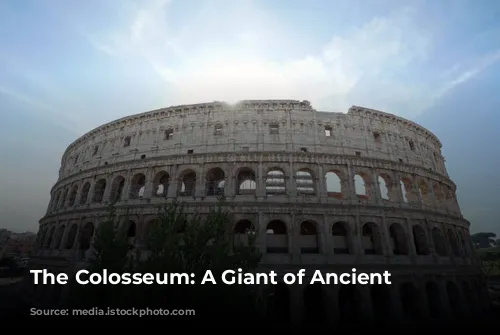
A Legacy of Violence and Spectacle
Roman spectators, it seems, were captivated by spectacles of violence, a taste for brutality comparable to modern-day “splatter” cinema. Imagine the sights and smells of mass battles and hunts, with the stench of blood, burnt flesh, and wild animals filling the air.
However, the Colosseum’s bloody history is not its only legacy. As the Roman Empire declined, the Colosseum fell into disuse. It was used as a quarry for building materials, and its walls became home to hermits, hospitals, and even a cemetery.
In the 16th century, Pope Sixtus V planned to demolish the Colosseum for town planning purposes, but Pope Benedict XIV declared it a sacred monument dedicated to the Passion of Christ, placing a cross on the structure to commemorate the suffering of Christian martyrs.
The Colosseum became a place of Christian pilgrimage, and successive Popes restored and preserved it, protecting it from further destruction. Today, it stands as a symbol of the enduring legacy of ancient Rome, its ruins attracting millions of visitors each year.
Charles Dickens, in his evocative words, perfectly captured the spirit of the Colosseum: “seeing the ghost of old Rome floating over the places its people walk in”. The Colosseum, though silent, still speaks to us, whispering tales of grandeur, violence, and the enduring power of the human spirit.
